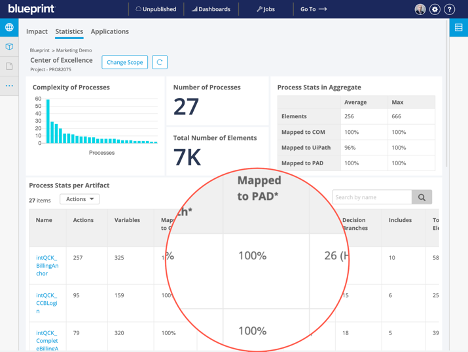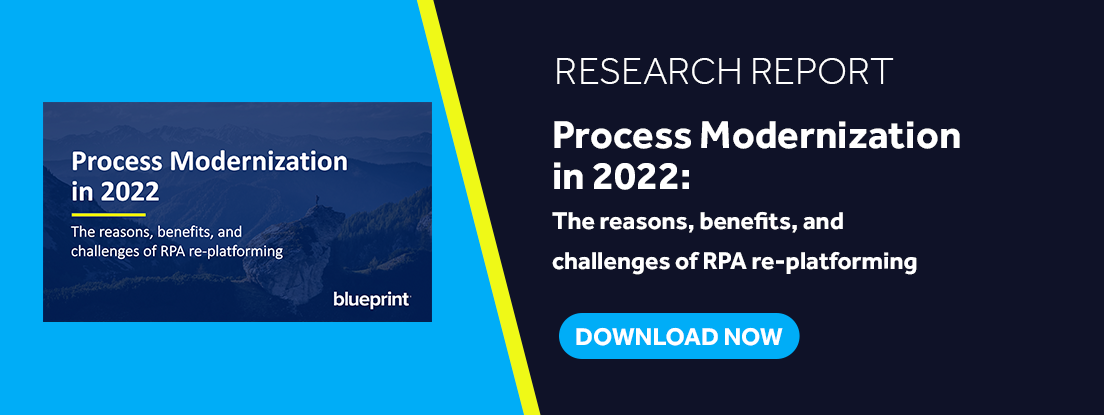The Difference Between Migrating and Re-platforming Your Automation Estate
Many companies are moving from their legacy RPA platforms and switching to next-generation intelligent automation solutions. In a recent survey Blueprint published, 74% of the respondents still on their original legacy tool reported that they were either in the process of switching or considering moving to another automation platform.
With expanding options like Microsoft’s Power Automate, which offers enhanced capabilities and lower total cost of ownership, switches are becoming even more common; however, there’s a big difference in how companies are switching RPA platforms.
Some organizations simply migrate their automation estates to new RPA tools. Others re-platform their automated processes. What’s the difference? This article explains how the two approaches differ so you can pick what’s best for your organization.
Migrating Automation Estates
Migrating entire automation estates from one RPA platform to another is essentially just a lift and shift motion. Each automated process is investigated to understand what it does and then rebuilt from scratch so that it can run in the destination platform.
Besides the amount of manual effort and consequential costs this approach has, it also prevents organizations from taking the opportunity to optimize and improve their automations in the process.
On average, 30% of automation estates are redundant for a variety of reasons. If an automation estate costs $1 million to maintain, that means $300,000 in waste. When you simply migrate your automation estate to a new RPA platform, you inadvertently move all that waste and added expense into the new solution.
Re-platforming automation estates enables organizations to identify and eliminate that waste while getting up and running in the destination RPA platform.
Re-platforming Automation Estates
Re-platforming automation estates is the process of assessing, value mapping, and optimizing your automations before re-deploying them with the help of technology in the destination RPA platform.
The assessment and value map of your automation estates indicates:
- how complex your automations are
- where unnecessary complexities may exist that can be rectified to reduce risk
- redundant automations or where redundancies in your automations may reside
- where those redundancies can be removed to streamline your automation estate and reduce costs moving forward
Once the value mapping assessment of your automation estate is complete, you can start porting over your optimized and improved automations. Switching providers is much more systematic and predictable when you use a purpose-built solution like Blueprint to re-platform your automations.
Blueprint ingests all of your automations and provides you with all the insight and analytics needed to perform your value map assessment, such as:
- The complexity of your automations, and
- How many applications your automations interact with, in addition to the actions, variables, and decision branches of each process.
In the background, Blueprint also maps your automations into the leading RPA platforms like Microsoft Power Automate so you can see the percentage each process from your legacy RPA tool has been mapped. This enables you to strategize and plan all the fit and finish touches to accelerate and optimize your transition to a new intelligent automation platform.

With the help of technology like Blueprint, the risk, errors, and massive effort that migration projects demand are entirely eliminated while also delivering 60-75% in time and cost savings.
If you’re interested in learning more, download the Blueprint RPA Migration datasheet or speak to one of our solution experts for a free consultation for your switch to a new RPA vendor.
Share this
Recent Stories

The 5 Differences Between Legacy RPA Tools and Next-Generation Intelligent Automation Platforms

The Total Cost of Ownership Components to Consider for RPA Migrations



